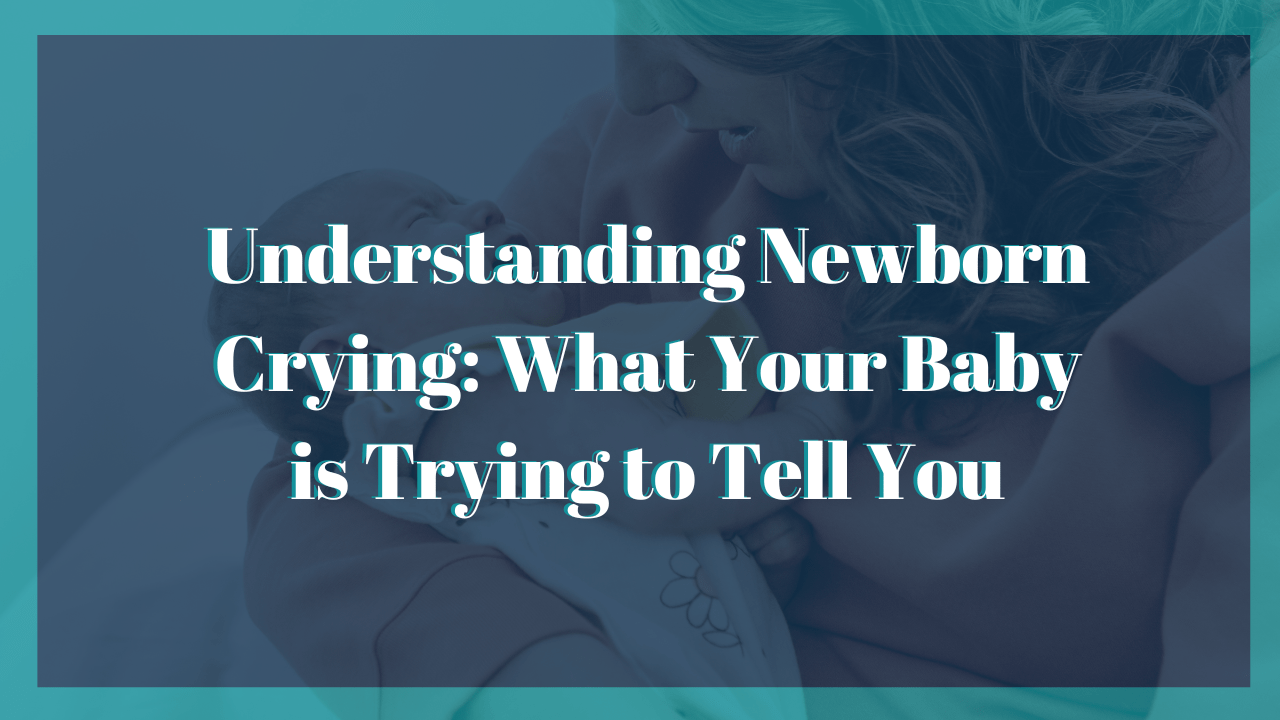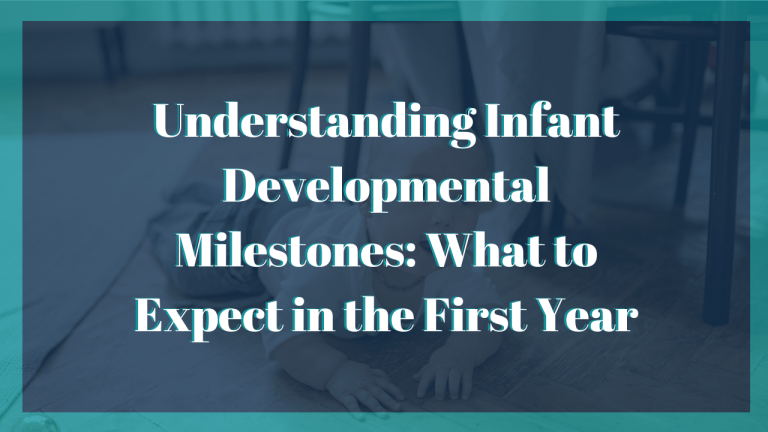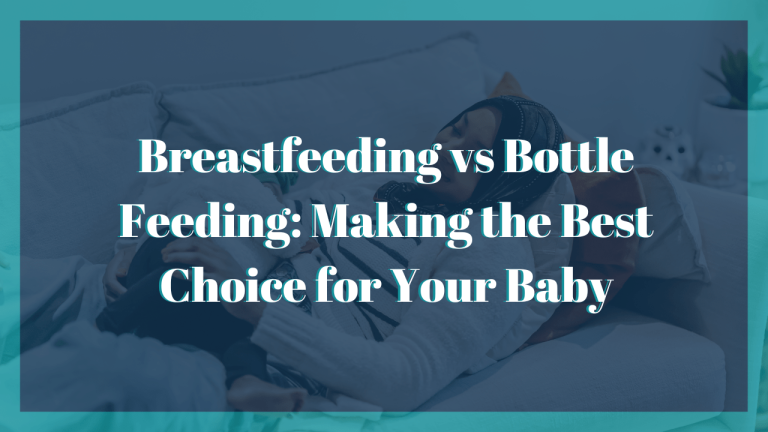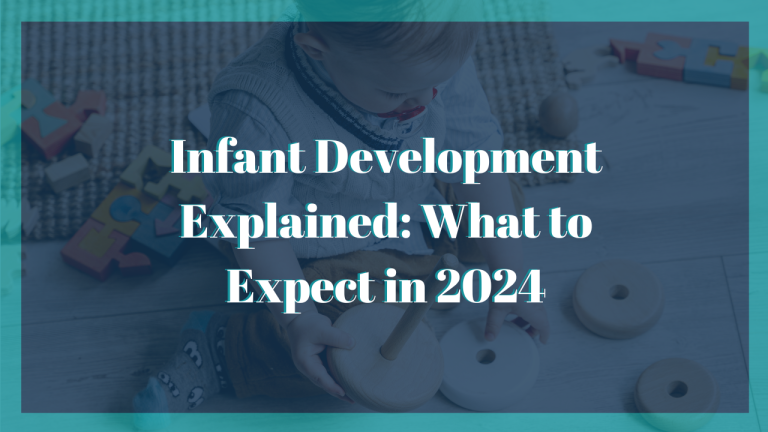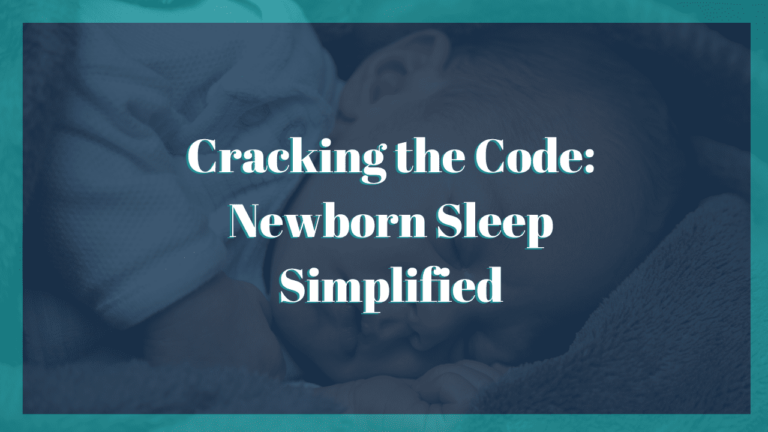Understanding Newborn Crying: What Your Baby is Trying to Tell You in 2024
Welcoming a newborn into your life is a heartwarming experience, but it can also come with a lot of challenges—especially when it comes to understanding their cries! Did you know that babies have distinct cries for different needs? That’s right! In fact, studies show that parents who learn to interpret their baby’s cries tend to be more responsive, which can lead to better emotional bonding and less stress for both the baby and the parents. In this guide, we’ll dive into the various types of newborn cries, what each one signifies, and how you can respond to meet your baby’s needs effectively. Whether you’re a first-time parent or adding another little one to your family, this information will empower you to better understand and care for your newborn.
Why Do Newborns Cry?

Newborn crying is one of the primary ways a baby communicates with the world. In the first few months of life, your baby relies on crying as the most effective tool to express their needs and discomforts. But why exactly do newborns cry? Let’s explore some of the most common reasons behind those wails, so you can better understand and respond to your little one.
Crying as a Form of Communication
From the moment they are born, babies use crying to communicate their needs. Unlike adults, newborns can’t verbalize what they’re feeling, so they rely on cries to let you know when something is wrong or when they need something. Whether it’s hunger, fatigue, discomfort, or the need for attention, crying is their way of saying, “I need you.” Understanding newborn crying as a form of communication can help parents respond more quickly and effectively, leading to a happier and more content baby.
The Importance of Crying for Development
Crying is not just a call for help—it’s also a crucial part of a newborn’s development. Studies have shown that crying plays a vital role in a baby’s physical and emotional growth. When a newborn cries, it stimulates their respiratory and cardiovascular systems, which can help strengthen their lungs and heart. Additionally, responding to your baby’s cries can promote bonding, which is essential for emotional development. This early interaction helps your baby feel secure and understood, laying the foundation for healthy emotional connections later in life.
Common Reasons for Newborn Crying
There are several common reasons why newborns cry, each related to their basic needs. One of the most frequent causes is hunger. Newborns have small stomachs and need to eat frequently, so they will often cry to signal that it’s time for a feeding. Another common reason is tiredness; babies can become overtired and may cry when they need help falling asleep. Discomfort is another key reason—whether it’s a wet diaper, tight clothing, or an uncomfortable sleeping position, newborns will cry to let you know they need to be made comfortable.
The Role of Crying in Building Parent-Child Bonds
When you respond to your baby’s cries, you’re not just meeting their immediate needs—you’re also building a strong emotional bond. Responsive parenting, where you quickly and sensitively attend to your baby’s cries, has been shown to foster secure attachment, which is crucial for your baby’s emotional well-being. This bond is built on trust and helps your baby feel safe and loved, which is essential for their overall development.
Crying as a Normal Part of a Newborn’s Life
It’s important to understand that crying is a normal and expected part of a newborn’s life. In fact, most babies cry for an average of 2 to 3 hours a day during the first few months. This can vary from baby to baby, with some crying more and others less. While it can be stressful to hear your baby cry, it’s important to remember that crying is a normal part of their development. By learning to interpret the different types of cries and responding appropriately, you can help soothe your baby and reduce the overall amount of crying.
The Different Types of Baby Cries

As a new parent, one of the most challenging yet essential tasks is learning to interpret the different types of newborn cries. Each cry can signify a different need or discomfort, and understanding these subtle differences can help you respond more effectively, ensuring your baby feels secure and cared for. Let’s explore the various types of newborn crying and what each one typically means.
The “I’m Hungry” Cry
Hunger is one of the most common reasons for newborn crying, especially in the early weeks when babies need to feed frequently. The “I’m hungry” cry usually starts with short, low-pitched cries that gradually become louder and more rhythmic as the baby’s hunger increases. This cry can also be accompanied by other hunger cues, such as sucking on fists, smacking lips, or turning their head toward your chest (rooting reflex). Recognizing this cry and responding promptly by offering a feeding can help soothe your baby quickly, reducing both their distress and yours.
The “I’m Tired” Cry
Newborns need a lot of sleep—up to 16-18 hours a day—but they often struggle to settle down on their own. The “I’m tired” cry is typically soft, whiny, and may start and stop as your baby tries to fight sleep. You may also notice other signs of tiredness, such as yawning, rubbing eyes, or becoming fussy and irritable. When you hear this type of cry, it’s a good indication that your baby needs help winding down and falling asleep. Techniques like swaddling, rocking, or using white noise can be very effective in soothing a tired baby and helping them drift off to sleep.
The “I’m Uncomfortable” Cry
Discomfort is another common cause of newborn crying, and this can be due to a variety of reasons. The “I’m uncomfortable” cry is usually more intense and may sound more urgent than other types of cries. Common sources of discomfort include a wet or dirty diaper, clothing that is too tight, or being too hot or cold. Babies may also cry if they are in an awkward position or if something is irritating their skin. When you hear this type of cry, it’s important to check your baby’s diaper, clothing, and surroundings to ensure they are comfortable and free of any discomfort.
The “I’m in Pain” Cry
The “I’m in pain” cry is often the most distressing for parents because it usually signals that something is wrong. This cry is typically high-pitched, intense, and persistent, and it may be accompanied by other signs of distress, such as arching the back, clenching fists, or flailing arms and legs. Pain can be caused by a variety of factors, such as gas, colic, teething, or an underlying medical issue. If your baby’s crying is unusual or you suspect they are in pain, it’s important to assess the situation and consult with your pediatrician if necessary. Quick action can help alleviate your baby’s discomfort and prevent any potential health issues from escalating.
The “I Need Attention” Cry
Sometimes, a baby just needs to be held, cuddled or reassured that you’re nearby. The “I need attention” cry is usually less intense and may sound more like a whimper or fuss rather than a full-blown cry. Newborns are naturally social beings who crave the warmth and comfort of being close to their caregivers. Responding to this cry by picking up your baby, talking to them softly, or offering a pacifier can provide the comfort they need. Contrary to some outdated advice, attending to your baby’s need for attention does not spoil them—it helps build a secure attachment, which is crucial for their emotional development.
How to Respond to Your Baby’s Cries

Responding to your baby’s cries effectively is crucial for meeting their needs and fostering a sense of security and trust. When your newborn cries, it can be overwhelming, but understanding how to assess the situation and provide the appropriate response can make a significant difference in both your baby’s comfort and your peace of mind. Here’s a step-by-step guide on how to respond to your baby’s cries, incorporating key techniques and approaches.
Assessing the Situation: A Step-by-Step Approach
When your newborn starts crying, the first step is to calmly assess the situation. Instead of immediately reacting, take a moment to observe your baby and consider the possible reasons for their distress. Look for cues like hunger signs (such as rooting or sucking motions), signs of tiredness (yawning or rubbing eyes), or indications of discomfort (such as fussiness or a wet diaper). By taking a systematic approach to understanding why your baby is crying, you’ll be better equipped to provide the right solution.
Feeding and Hunger Cues: When and How to Offer Food
One of the most common reasons for newborn crying is hunger. If you suspect your baby is hungry, watch for hunger cues like sucking on their hands, making sucking noises, or turning their head toward your chest. When you recognize these signs, it’s essential to respond quickly by offering a feeding, whether it’s breastfeeding or bottle-feeding. Newborns need to eat frequently, so timely feedings not only soothe your baby but also help establish a routine that supports their growth and development. Remember that crying is often a late hunger cue, so it’s beneficial to feed your baby before they reach this stage whenever possible.
Comforting Techniques: Swaddling, Rocking, and Using a Pacifier
If your baby is crying due to tiredness or the need for comfort, there are several soothing techniques you can try. Swaddling, or wrapping your baby snugly in a blanket, can help them feel secure and mimic the warmth and comfort of the womb. Gentle rocking or swinging motions can also be very effective in calming a crying baby, as these movements are reminiscent of what they experienced in utero. Additionally, offering a pacifier can provide comfort through sucking, which is a natural reflex that helps babies self-soothe. By experimenting with these techniques, you’ll discover what works best for your baby in different situations.
The Importance of a Calm Environment: Creating a Soothing Atmosphere
Creating a calm and soothing environment is key to helping your baby settle down when they’re crying. This can involve dimming the lights, reducing noise, and ensuring the room temperature is comfortable. Some babies respond well to white noise or soft music, which can help drown out other distracting sounds and create a peaceful atmosphere. Holding your baby close and speaking to them in a soft, reassuring voice can also work wonders in calming them down. The more relaxed and serene the environment, the easier it will be for your baby to stop crying and drift off to sleep or become content.
When to Seek Help: Signs That Crying May Indicate a Medical Issue
While most newborn crying is related to common needs like hunger, tiredness, or discomfort, there are times when crying may indicate a more serious issue. If your baby’s crying is unusually high-pitched, persistent, or accompanied by other symptoms such as fever, vomiting, or a change in feeding or sleeping patterns, it’s important to consult your pediatrician. Conditions like colic, acid reflux, or infections can cause excessive crying and require medical attention. Trust your instincts—if something doesn’t seem right, don’t hesitate to seek help. Early intervention can prevent minor issues from becoming major problems and ensure your baby’s health and well-being.
Common Myths About Newborn Crying

Newborn crying can be a source of anxiety for many parents, and it’s no surprise that there are numerous myths and misconceptions surrounding it. These myths can lead to confusion and even guilt, making it harder to navigate the challenges of early parenthood. Let’s debunk some of the most common myths about newborn crying, so you can feel more confident in your ability to care for your baby.
Myth 1: “Crying it Out” Is Necessary for Building Independence
One of the most pervasive myths about newborn crying is the idea that letting your baby “cry it out” will teach them to be independent and self-soothe. The concept of letting a baby cry without responding is often associated with sleep training methods that encourage parents to delay attending to their baby’s cries. However, research has shown that newborns are not developmentally ready to self-soothe in the first few months of life. Crying is their primary means of communication, and when parents consistently respond to their baby’s cries, it helps build a secure attachment. This secure bond lays the foundation for healthy emotional development and independence later in life. Responding to your newborn’s cries does not spoil them; instead, it teaches them that their needs will be met, fostering a sense of security and trust.
Myth 2: Picking Up Your Baby Every Time They Cry Will Spoil Them
Another common myth is that picking up your baby every time they cry will spoil them or make them overly dependent on you. This belief is rooted in outdated parenting advice that suggests responding to every cry will lead to a “clingy” child. In reality, newborns cry because they have a need that must be addressed—whether it’s hunger, discomfort, or the need for attention. Research supports the idea that promptly responding to a crying baby actually promotes healthy emotional development. When parents consistently meet their baby’s needs, the baby learns to trust their caregivers, which can lead to greater independence as they grow. In contrast, ignoring a baby’s cries can increase stress and anxiety for both the baby and the parents. So, don’t hesitate to pick up your baby when they cry—it’s a vital part of caring for their well-being.
Myth 3: All Crying Means the Baby Is Hungry
Many parents assume that every time a newborn cries, it must be because they’re hungry. While hunger is a common reason for crying, it’s not the only one. Newborns cry for a variety of reasons, including tiredness, discomfort, the need for a diaper change, or simply wanting to be held. It’s important to observe your baby’s cues and consider other possibilities before automatically offering food. Overfeeding in response to every cry can lead to digestive discomfort or other issues. By learning to interpret different types of cries, you can better identify the true cause of your baby’s distress and respond appropriately. This approach not only ensures that your baby’s specific needs are met but also helps you avoid creating unnecessary feeding habits.
Myth 4: Newborn Crying Always Indicates Something Is Wrong
It’s natural for parents to worry that persistent crying means something is seriously wrong with their baby. However, it’s important to understand that crying is a normal part of a newborn’s life. In fact, it’s estimated that newborns can cry for up to 2-3 hours a day during the first few months. This can happen even when all their basic needs have been met. Sometimes, babies cry simply because they are adjusting to the new world around them, or because they are overstimulated. While it’s important to assess your baby’s cries to rule out any potential issues, it’s also important to recognize that crying is a natural way for babies to process their environment. If your baby is well-fed, comfortable, and healthy, some crying is perfectly normal and doesn’t necessarily indicate a problem.
Myth 5: Newborns Should Be Able to Soothe Themselves by a Certain Age
A common misconception is that newborns should be able to soothe themselves by a specific age, often as early as a few months old. This expectation can place undue pressure on both parents and babies. The truth is that self-soothing is a developmental milestone that varies from baby to baby. Most newborns are not capable of self-soothing until they are several months old, and even then, it’s a gradual process. Forcing a newborn to soothe themselves before they are ready can lead to increased stress and may hinder their emotional development. Instead of focusing on getting your baby to self-soothe by a certain age, it’s more important to provide comfort and reassurance as they develop the skills to calm themselves over time.
By debunking these common myths about newborn crying, parents can approach their baby’s cries with greater understanding and confidence. Responding to your newborn’s needs with empathy and patience not only helps soothe them in the moment but also supports their long-term emotional and developmental well-being. Remember, every baby is unique, and there is no one-size-fits-all approach to parenting. Trust your instincts, and don’t be swayed by outdated myths—your baby’s cries are simply their way of communicating with you, and your loving response is the best way to meet their needs.
Tips for Managing Stress When Your Baby Cries

Caring for a newborn can be an overwhelming experience, especially when your baby’s crying seems relentless. It’s natural for parents to feel stressed or anxious when they’re unable to soothe their baby immediately. Managing stress is crucial not only for your well-being but also for your ability to respond calmly and effectively to your baby’s needs. Here are some practical tips for managing stress when your baby cries, helping you stay calm and collected during those challenging moments.
Recognize and Accept Your Feelings
The first step in managing stress when your baby cries is to recognize and accept your feelings. It’s normal to feel frustrated, anxious, or even helpless when you can’t immediately calm your baby. Rather than feeling guilty about these emotions, acknowledge them as a natural part of parenthood. Understanding that it’s okay to feel stressed can actually help reduce the pressure you put on yourself. Remember, you’re doing your best, and parenting is a learning process. By accepting your feelings, you create space to approach the situation more calmly and effectively.
Practice Deep Breathing and Mindfulness
When you’re in the midst of a stressful situation, such as dealing with a crying baby, practicing deep breathing and mindfulness can help you stay grounded. Deep breathing exercises—such as inhaling deeply through your nose, holding your breath for a few seconds, and slowly exhaling through your mouth—can calm your nervous system and reduce stress levels. Pairing deep breathing with mindfulness, where you focus on the present moment without judgment, can help you maintain a sense of control. By concentrating on your breath or the sensation of holding your baby, you can break the cycle of stress and respond to your baby’s needs with a clear mind.
Take Breaks When Needed
It’s important to remember that it’s okay to take a break when your baby’s crying becomes overwhelming. If you’ve tried everything to soothe your baby and they’re still crying, it’s perfectly fine to place them in a safe space, like their crib, and step away for a few minutes. Taking a brief break allows you to recharge and regain your composure. Use this time to stretch, drink some water, or simply take a few moments to yourself. Returning to your baby with a calmer mindset can make a big difference in how you handle the situation. Remember, it’s better to take a break than to let stress escalate to a point where it affects your ability to care for your baby.
Build a Support System
Parenting can be incredibly demanding, and you don’t have to go through it alone. Building a support system is essential for managing stress when your baby cries. Reach out to family members, friends, or other parents who can offer a listening ear, practical advice, or even a helping hand. Sharing your experiences and hearing from others who have been through similar situations can provide reassurance and reduce feelings of isolation. If possible, consider joining a parenting group or seeking out online communities where you can connect with others going through the same challenges. Knowing that you have a network of support can ease the emotional burden and help you navigate difficult moments with more confidence.
Focus on Self-Care
Taking care of yourself is vital when it comes to managing stress as a parent. While it may seem difficult to prioritize self-care when you’re busy caring for a newborn, even small acts of self-care can make a significant difference. This could mean taking a short walk, enjoying a quiet cup of tea, or spending a few minutes reading or listening to music. Prioritizing sleep as much as possible is also crucial, as lack of sleep can exacerbate stress and make it harder to cope with crying spells. Remember, self-care isn’t selfish—it’s necessary for maintaining your mental and emotional well-being, which in turn helps you be the best parent you can be.
Develop a Soothing Routine
Having a consistent soothing routine can help reduce stress for both you and your baby. Babies often respond well to routines, as they provide a sense of security and predictability. Consider incorporating calming activities into your daily routine, such as a warm bath, gentle rocking, or soft lullabies before bedtime. Over time, these activities can signal to your baby that it’s time to relax, making it easier to calm them when they’re upset. A soothing routine can also give you a sense of control and structure, which can be particularly reassuring during times of stress.
Know When to Seek Professional Help
If your baby’s crying is causing significant stress and affecting your mental health, it’s important to know when to seek professional help. Persistent stress, anxiety, or feelings of helplessness may indicate that you could benefit from talking to a healthcare provider or a mental health professional. Postpartum depression and anxiety are real and treatable conditions, and seeking help is a sign of strength, not weakness. Your well-being is just as important as your baby’s, and getting the support you need can make a world of difference for both of you.
Managing stress when your baby cries is a crucial part of parenting, and it’s something that all parents face. By recognizing and accepting your feelings, practicing mindfulness, taking breaks, building a support system, focusing on self-care, developing a soothing routine, and knowing when to seek help, you can navigate these challenging moments with greater ease. Remember, you’re not alone in this journey, and with time and support, you’ll become more confident in your ability to care for your baby and manage the stress that comes with it.
Conclusion:
Understanding your newborn’s cries is a crucial step in building a strong bond and ensuring their well-being. By learning to interpret different types of cries, you can respond more effectively, helping to soothe your baby and reduce stress for both of you. Remember, every baby is unique, and with patience and practice, you’ll become more attuned to your little one’s needs. So the next time your newborn cries, you’ll know just what they’re trying to tell you!

